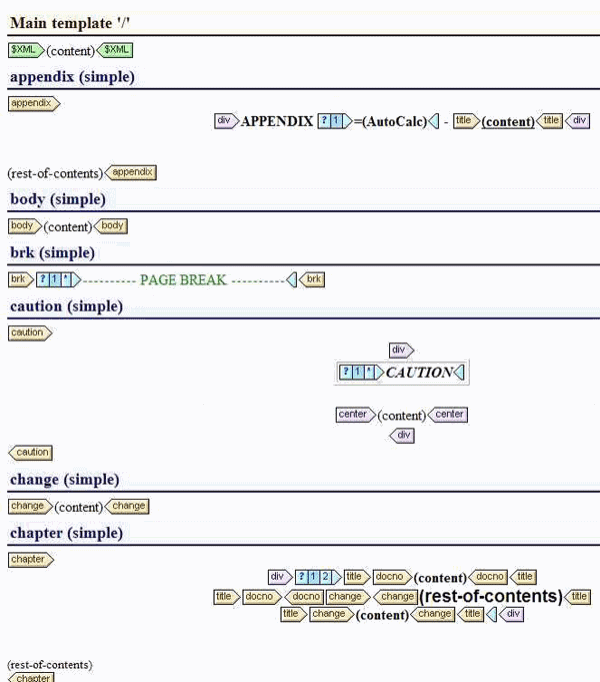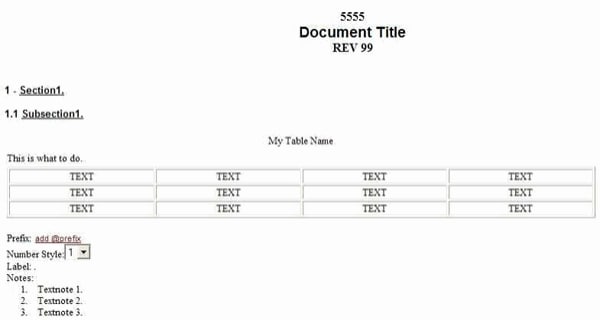Overview
The Portsmouth Naval Shipyard in Kittery, Maine, is a division of Naval Sea Systems Command (NAVSEA), the largest of the United States Navy’s five systems commands. They approached Wrycan, an Altova partner focused on content-centric XML expertise, for help converting some of their legacy format technical manuals to XML based on the Navy ETM XML DTD and recreating them as PDFs. The shipyard had been given a mandate to start utilizing XML as their primary data and storage format and needed a low cost and reliable publishing solution that could be easily maintained by their in-house workforce. Wrycan had some experience working with the Altova MissionKit for XML development, as well as a broad expertise in XML technologies including XML, XSL:FO, and DTD. They chose to use XMLSpy, StyleVision, and Authentic as the development tools for this implementation because of their intuitiveness, ease-of-use, and low price tag.
The Challenge
The Portsmouth Naval Shipyard needed to convert about 10,000 pages of content from a legacy format into XML that was conformant to their DTD. This included an automated conversion, manual review and cleanup, and a command line tool to publish the XML back into its original PDF format. As with any large publishing and conversion operation, the project required heavy QA review post-conversion, much of which could be done by non-technical shipyard employees if they had a mechanism to help them interpret and access the XML markup. In addition, because of the relative complexity of the documentation format, which included complicated page layout details such as a variable number of columns per page and different margin widths, callouts interspersed with sections and enumerated lists, as well as many large schematic models, some of which were on foldout pages, the XSL:FO coding promised to present a formidable challenge.
The Solution
Wrycan performed the bulk of the content conversion in-house using custom scripts and some manual processes, along with some technical QA. After the content was converted, Wrycan used StyleVision’s drag and drop design interface to create Authentic e-Forms for editing using the Navy ETM XML DTD as the structural component. Advanced stylesheet functions such as conditional templates and auto-calculations were inserted to facilitate QA and editing workflows.  After the content conversion, Wrycan implemented a command line processing tool that includes multiple steps such as:
After the content conversion, Wrycan implemented a command line processing tool that includes multiple steps such as:
- Volume assembly from chunks of XML files
For greater flexibility and usability, the Navy technical manuals were divided up into sections including Front Matter, Chapters, Back Matter, and image files. This enabled Wrycan to make certain parts of these files available for reuse. Components that appeared identically in more than one place within the manuals could be segmented so that changes made in one place would iterate throughout the documentation.
- XML to XSL-FO conversion
Wrycan used XMLSpy, Altova’s full-featured XML editor , to hand-code the advanced XSL:FO that was needed for the manuals. The complexity of the XML and PDF output can be seen in the following examples: Volume source, Front Matter source, Chapter source, and Final document (3.8 MB PDF).
- Custom page formatting
This project required various page sizes within one document, such as a portrait page followed by a foldout 11″ x 17″ landscape page. There are Naval documentation requirements specifying that different page formats have different printing requirements. For example, foldout pages are printed on one side only while other pages are double-sided.
- Post processing steps
There were also page numbering requirements, such as every chapter must start on an odd numbered page. If this causes a page to be blank, a message indicating that the page was intentionally left blank is placed on the page. These requirements are automatically satisfied by Wrycan’s processing tool.
- PDF creation
Wrycan integrated RenderX’s XEP software into the processing pipeline to convert the XSL:FO output, including all images and common content, into one PDF file.
The editing of the content is done with Authentic via Stylevision, which was recently upgraded to the most recent release for more advanced table support and authoring options. Below is a sample screenshot of one of the Authentic e-Forms for WYSIWYG XML editing that was generated for NAVSEA based on the StyleVision stylesheet design. 
The Results
The Portsmouth Naval Shipyard now has an XML publishing solution with native XML editing capabilities. They can reproduce their technical manuals in PDF using XML as the content source. They are now ready to move onto the next step, which is implementing a full scale content management system with workflow and custom publishing capabilities. Find out how Altova tools can help with your documentation and publishing challenges. Download a fully functional free trial of the Altova MissionKit today!



